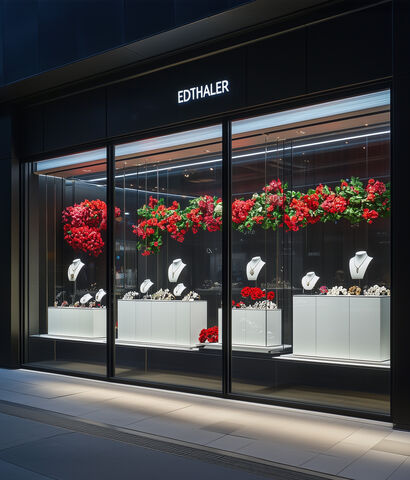What exactly is bullet-resistant glass and how does it differ from ordinary glass?
Bullet-resistant glass is a laminated safety glass that is reinforced in thickness according to the need to stop penetrating projectiles. It does not differ significantly from conventional laminated glass, except that it is thicker to absorb the energy of the projectile and minimise shattering.
What are the advantages of bullet resistant glass over other security solutions?
Bullet-resistant glass, such as our UNIGLAS® SAFE, offers a high level of transparency and protection without compromising the aesthetics of a building. Compared to other safety solutions, such as polycarbonate-glass combinations, there is no risk of delamination, i.e. the individual layers of the laminated glass peeling off. This can occur when different materials such as glass and polycarbonate are combined and expand differently under the influence of temperature, causing the bonding layers to come loose. However, UNIGLAS® SAFE, which consists exclusively of glass and special interlayers, remains stable in the long term and retains its protective function.
Shatterproof glass must be able to prevent the penetration of ammunition. Our UNIGLAS® SAFE is ideal for buildings such as jewellers or banks that require a high level of security.



How is UNIGLAS® SAFE manufactured and which materials are used?
The bullet-resistant glass is produced by bonding several layers of glass with special polyvinyl butyral (PVB) interlayers. The number and thickness of the layers and the films used depend on the required level of protection. Additional materials such as polycarbonate may be used for higher levels of protection.
Are there different kinds or categories? If so, what are the main differences?
There are different types of bullet-resistant glass, the main difference being the protection class. These classes range from BR1, which is designed to stop light handguns, to BR7, which can withstand military ammunition. The differences lie in the thickness of the glass and the materials used. For example, if we take BR4, the glass must be able to stop .44 Magnum bullets and prevent them from penetrating. This is the best protection against bullets.
Can you explain how triple-layer bullet-proof glass works?
The combination of glass and foils absorbs the force of the projectile and distributes it over the surface, causing the glass to shatter instead of letting the projectile through.